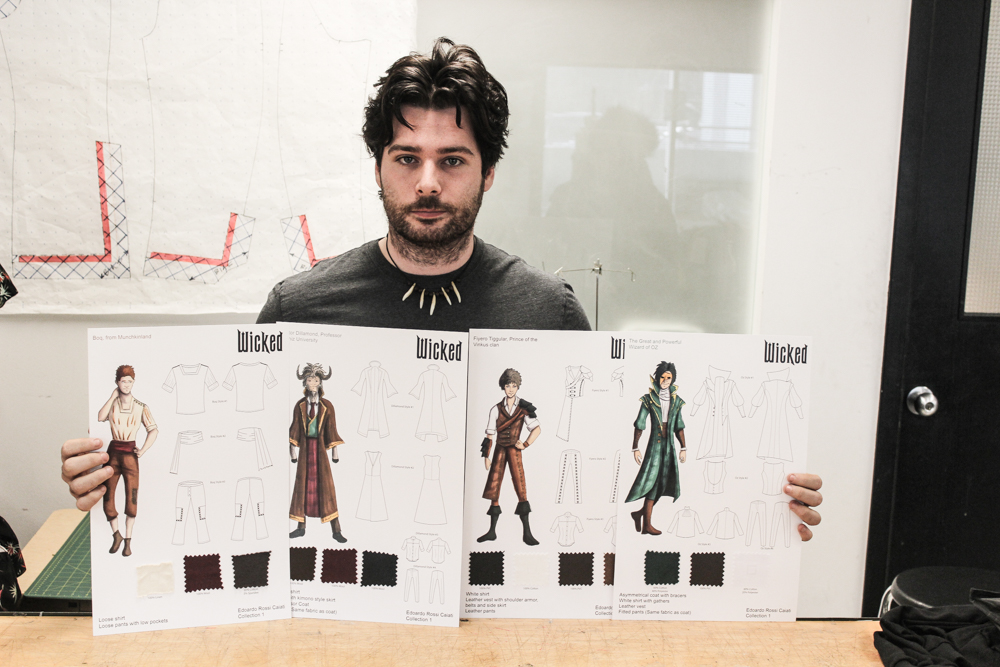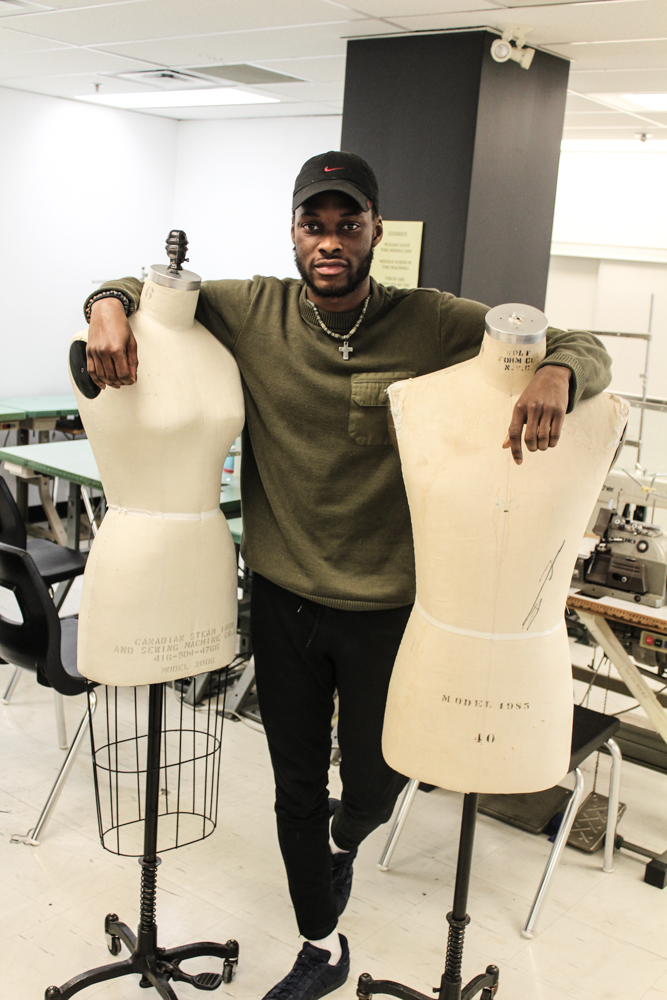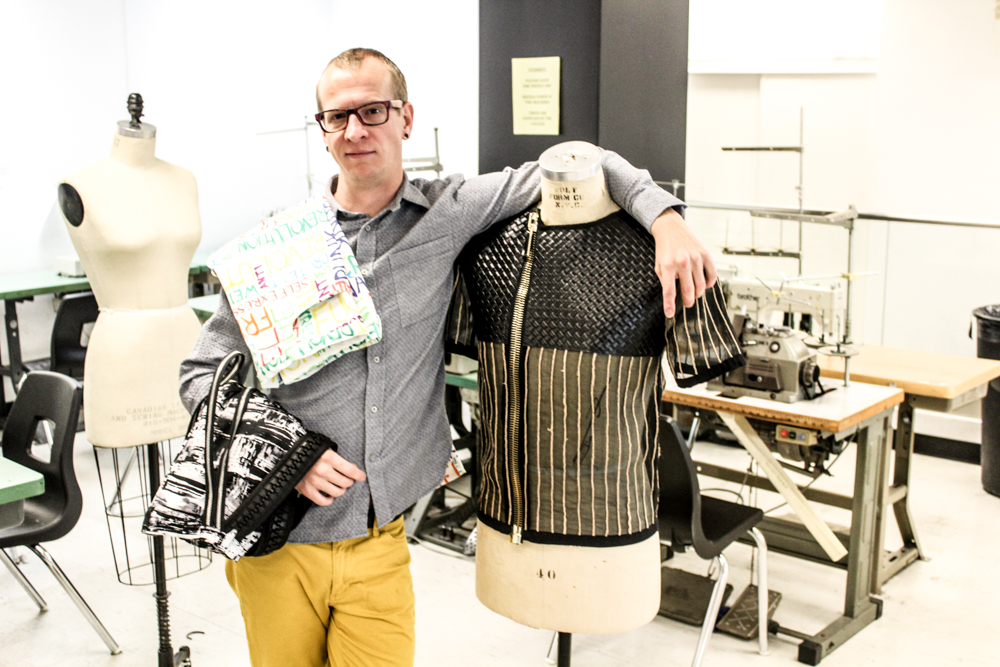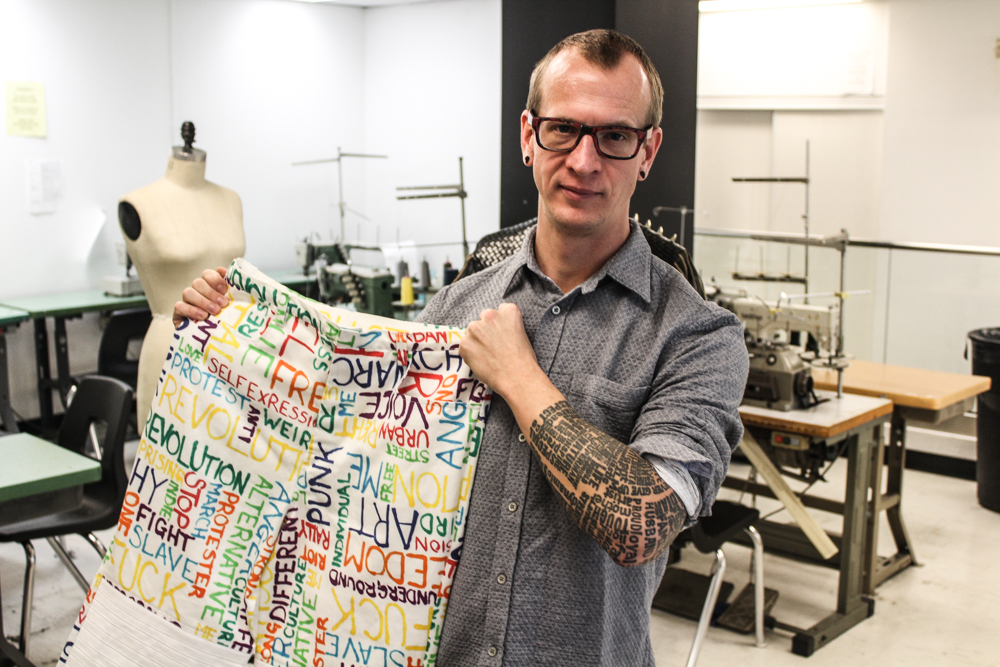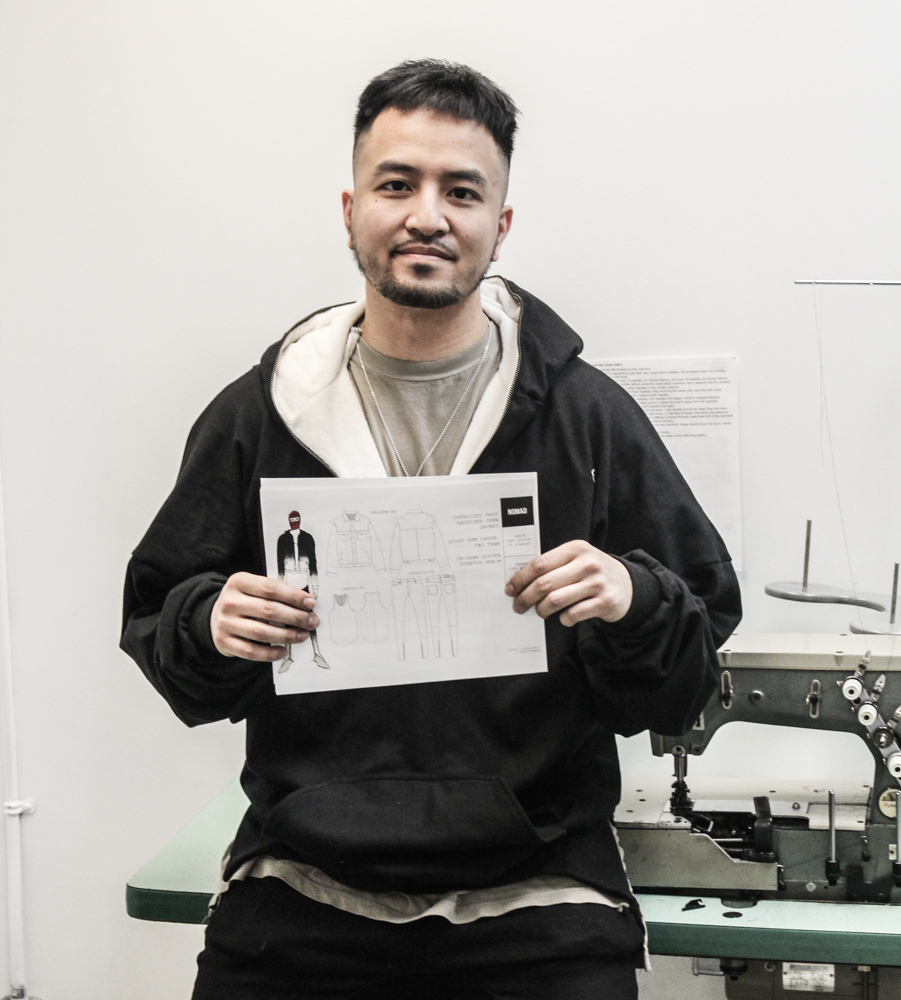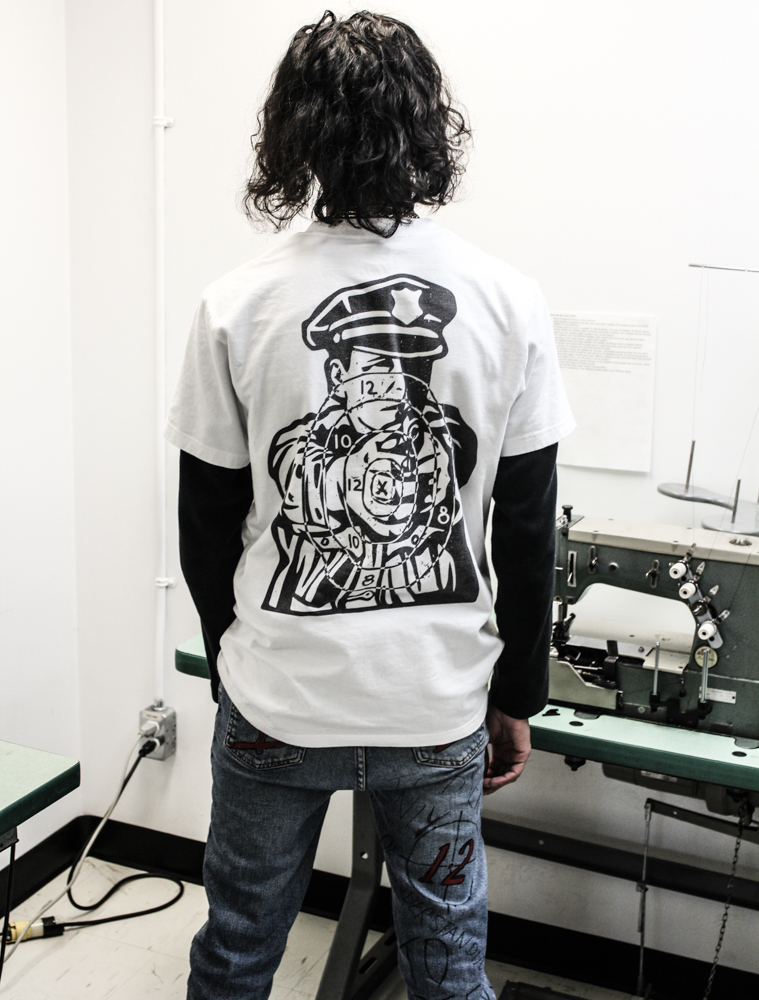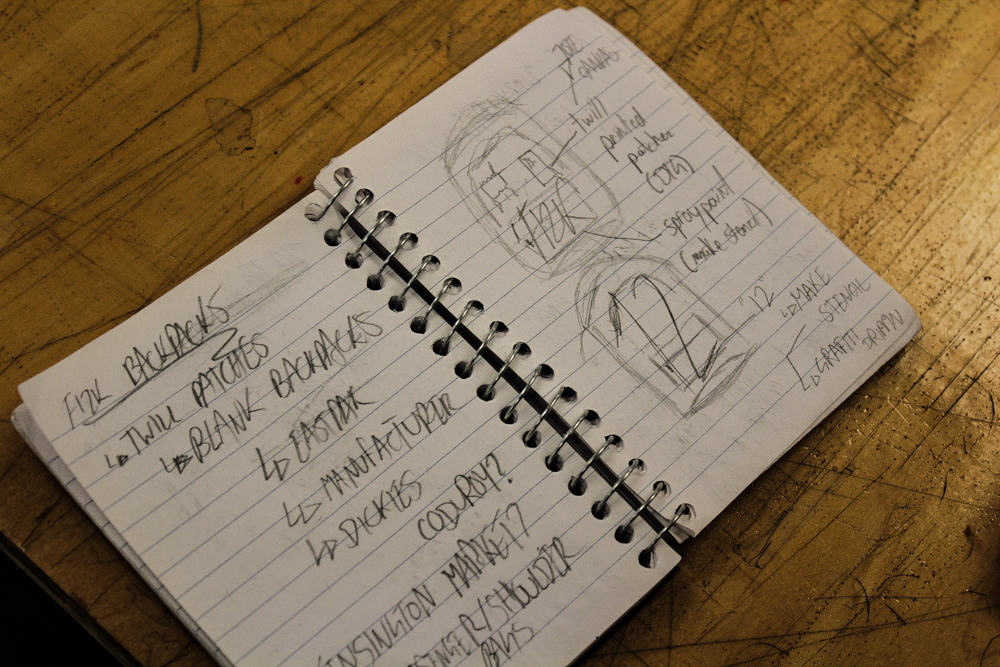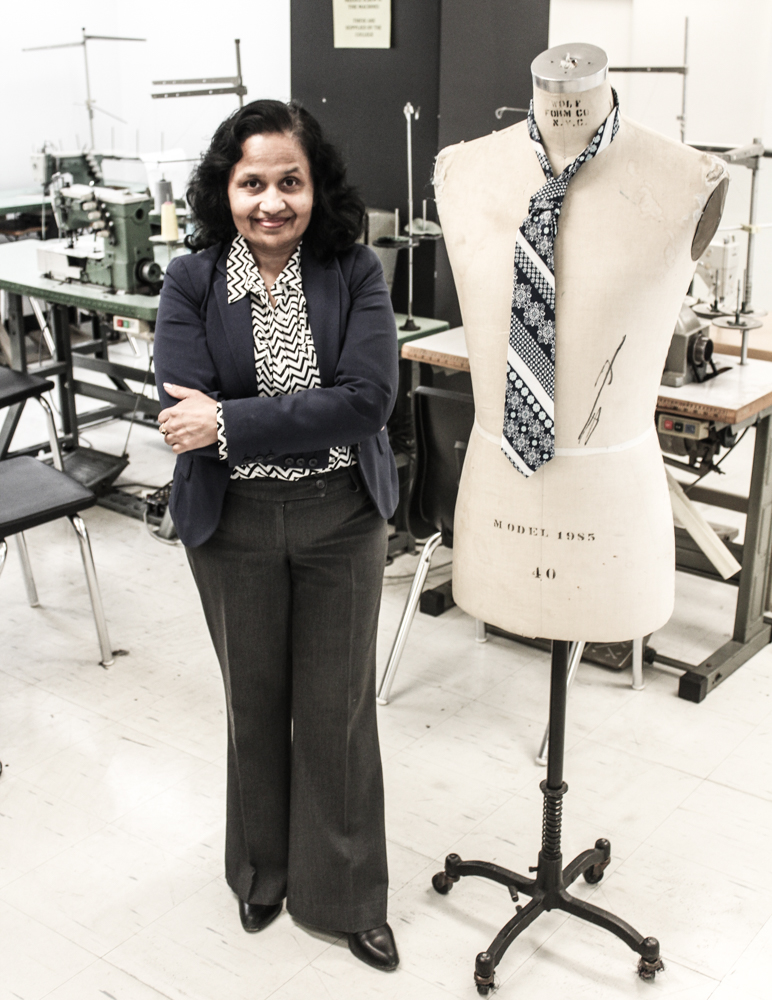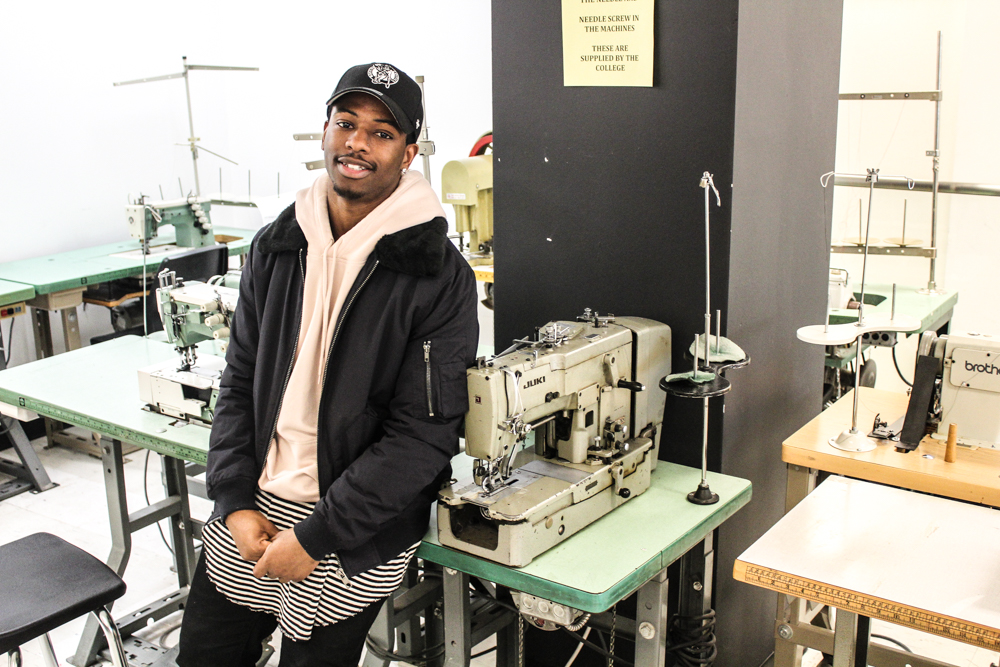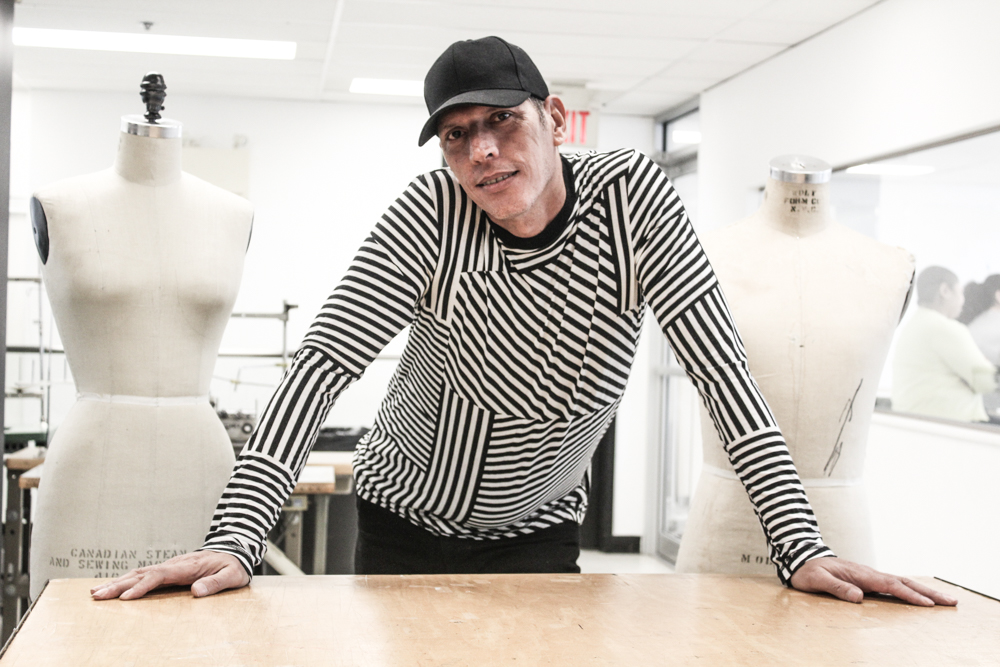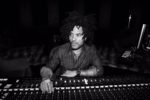The Rad Apartment Series – Toronto Film School – Fashion Design Program

There might be some truth to thrill when you get to interview one of your leading favorite designers, but the gratification of telling the story of the up and coming thread enthusiasts would turn any journalist upside down on their fashionable hat. I recently got in touch with Keith Richardson, The rad prof from the Toronto Film School’s Fashion Program. He led me to a few students that touched on their journey to their studies, sketches/designs and visions beyond the mainstream runway.
Every designer has a piece of memorabilia like certain fabric or a collection that struck a chord, For Michael Estes – a sketchbook is where it all started. “ I have made stuff since I was a child when it came to fashion design, I didn’t necessarily get into the program for that – it was more for costuming for film and television. I am multi-purpose both in men and women’s fashion. It wasn’t until I was a teenager where I felt fabric for more than just clothing”
One of the main reasons why this interview was such a magnetic field is that we wanted to know what these young designers were going to do so different than what we see now. Specifying in what is lacking and what they would like implemented. Its hard to pinpoint the identity of what you want to streamline in – says Justin Harder. Menswear is very conservative, especially in Toronto. Most guys don’t know what they like so everyone just ends up looking the same. In Japan, it’s really cool because there is an option for everything. What you do is dive into a lifestyle and you consume all of it. I think that’s the most important thing for menswear is what suits your lifestyle not you fitting into a lifestyle.
Unfortunately, fashion comes with the stigma of struggling artist, and finding a healing agent to push forward through the negative voices can be hard. Emma Fenton sets the line straight on how to prepare yourself. I think it’s important for you to know when being creative not everyone is going to like it and at the end of the day, keep creating as long as you’re enjoying it and having fun – the ‘critism’ doesn’t matter that much. Of course, her being a woman in a man’s word, we thought she could give the best advice. I guess it’s a little different because most menswear is done by men. I don’t really have a problem with it because I stand my ground. I wanted to take a bit of the femininity and bring it into menswear, so the collection looks unisex.
Touching back on originality, what makes Edoardo Caiati standout from the rest of Toronto’s fashion students and oh it’s not just him originating from Italy either. I came here for costume’s ( particularly in movies) When it comes to fashion I always try and think what will this do if this was a costume. I never really think, this has to be on a person walking down the street. For me, that doesn’t exist. My approach to fashion in its self is that everyone should express themselves with their clothing, so every piece should be different, that’s why I never really got into fashion because a line is never really going to satisfy a whole piece for each client. When you work on costumes, you work on them one by one.
To really test out these designers we gave Michael Estes two scenarios 1. At a certain point of success, your clothing is #1 best seller but it’s not exactly how you authentically started out and it’s more of what the people want or 2. Your collections are still at home city runway shows a few years later out of school, but people admire your push for change locally? Much to our surprise, the ‘humble’ pie still lingers through each needle and thread. I would stick to my vision and individuality – confidently stated Michael. These days like Justin was saying, everything is the same, it’s boring and it’s tiresome. For me, I am someone who likes to be the black sheep when it comes to walking down the street. Everyone here in this metropolitan seems to wear black on black. I would rather have local fame.
Instead of giving away what Justin Harder might be working on, he chose a genre of music for you to visualize next time when you hit your playlist. Before it was really rock and roll – Right now popular culture is embracing hip-hop and rap. For me it’s a blend, I grew up listening to early/mid 90’s alternative and then grunge. When I started playing sports I got into rap. I like comfortable and stretchy clothes but at the same time, you can’t wear sweats all the time. In an ideal way, it feels like luxury to you but it’s completely functional.
If we could take a peek at Emma Fenton’s fashion mood board, who/and what do you think would be on it? 80’s inspiration – says, Emma. There would be crybaby, the outsiders, the breakfast club, vintage photography, Boy George and Johnny Depp.
Just like, writers, everyone goes through a mental dead zone and your creativity is ill. What are a few things that get you back into the groove for other artists that might be going through a hard time of getting out of that slump, Edoardo? What basically happens a lot of the time is that I know what I want to do but I can’t visualize it in my mind. In order to be able to unblock myself from this problem, I usually go do something completely different. Such as, go for a walk and I visit the aquarium quite a lot. I think about movies I see, and what will happen – if this happens, and my mind clears up to start concentrating what was my project again. Everything I did – I get new ideas for it.
As we carried through the interview more joined us briefly such as Geethani who touched briefly on her journey to fashion design. She studied at George Brown College in 2006 and later continued her studies today stating ‘ its now her time’. Romy pulls a lot of his inspiration from Harlem – the baggy clothing, rap music and expressed his interest in Marvin Gaye. Ogalu David takes his certain style from military and formal wear, explaining the defined looks and diffusing it into menswear. Michael Gowdie shared his journey from growing up in not the most ideal area of Toronto. To keep busy he was heavy into sports and explains his earlier passion for being a producer. Ending up in Toronto Film School – Design program he was sent by a lady to go to the open house and fell in love with it. Though at a time taking a leave of absence, it’s been amazing since coming back – he stated.
But..hey what about their support systems? For Michael Estes – His mother, family, and friends have been supporters of anything he wanted to do in his life. For Justin Harder, there were old-school expectations, which now are accepted but finding out what it was that fueled him was a journey. Emma’s parents are her biggest support system, though coming from a town that wasn’t creative, going into a field like such as this wasn’t something necessarily promoted. For Edoardo, it was a gradual process, at the time it was about maintaining and making a living. He at first used his creativity in the side parts of his life but soon realized it wasn’t for him and explained to his parents why he wasn’t able to live a life by living/working in a normal way.
A huge THANK YOU, to Keith for setting this interview up with his students in such short notice and to the student interviewees – “ By doing what you love, you inspire and awaken the hearts of others”
Check out their socials!
@Ed_Costumes
@emmariefenton
@whois_gowdie
@b_hawk2
@f12kvestiments / @romy.ganeshapillai
@mestes84
@mj.harder
Geethani Ambakumbura – Linked IN

